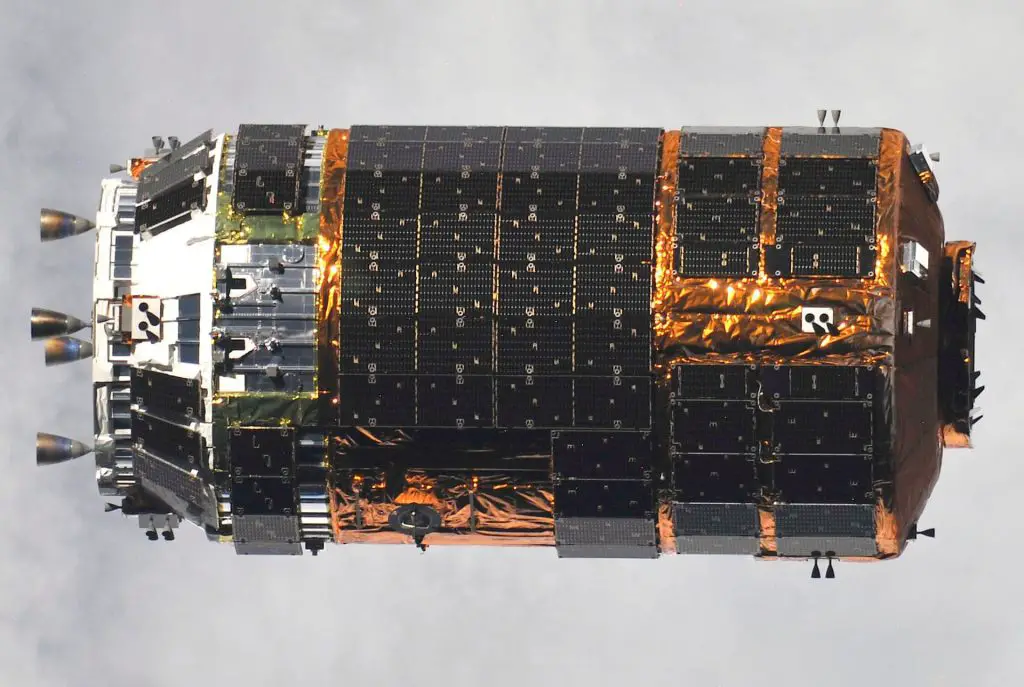
Kounotori 3
- Serial Number: HTV-3
- In Space: No
- Height: 9.8 m
- Diameter: 4.4 m
- Status: Single Use
The Kounotori 3 spacecraft embarked on 1 flight(s), showcasing its capability of Cargo Earth Orbit Logistics and designed with a flight life of Solo flight about 100 hours, stand-by more than a week, docked with the ISS about 30 days.. Notably, it boasts a crew capacity accommodating up to Array astronauts and a payload capacity of 6000 kg.
Kounotori 3, also known as HTV-3, is the third Japanese H-II Transfer Vehicle. It was launched on 21 July 2012 to resupply the International Space Station (ISS) aboard the H-IIB Launch Vehicle No. 3 (H-IIB F3) manufactured by MHI and JAXA. Kounotori 3 arrived at the ISS on 27 July 2012, and Expedition 32 Flight Engineer and JAXA astronaut Akihiko Hoshide used the International Space Station’s Canadarm2 robotic arm to install Kounotori 3, to its docking port on the Earth-facing side of the Harmony module at 14:34 GMT.
Launches
History
Like the European Automated Transfer Vehicle the Japan Aerospace Exploration Agency had agreed to take part in the resupply operations of the international space station and developed the HTV to perform this task.
The HTV is about 9.8 metres (32 ft) long (including maneuvering thrusters at one end) and 4.4 metres (14 ft) in diameter. Total mass when empty is 10.5 tonnes (11.6 short tons), with a maximum total payload of 6,000 kilograms (13,000 lb; 6.0 t; 6.6 short tons), for a maximum launch weight of 16.5 tonnes (18.2 short tons). The HTV is comparable in function to the Russian Progress, European ATV, commercial Dragon, and commercial Cygnus spacecraft, all of which bring supplies to the ISS. Like the ATV, the HTV carries more than twice the payload of the Progress, but is launched less than half as often. Unlike Progress capsules and ATVs, which use the docking ports automatically, HTVs and American commercial spacecraft approach the ISS in stages, and once they reach their closest parking orbit to the ISS, crew grapple them using the robotic arm Canadarm2 and berth them to an open berthing port on the Harmony module.
Agency
Japan Aerospace Exploration Agency
The Japan Aerospace Exploration Agency (JAXA) is Japan’s national aero-space agency. Through the merger of three previously independent organizations, JAXA was formed on 1 October 2003. JAXA is responsible for research, technology development and the launch of satellites into orbit, and is involved in many more advanced missions, such as asteroid exploration and possible manned exploration of the Moon. JAXA launch their Epsilon vehicle from the Uchinoura Space Center and their H-II vehicles from the Tanegashima Space Center.